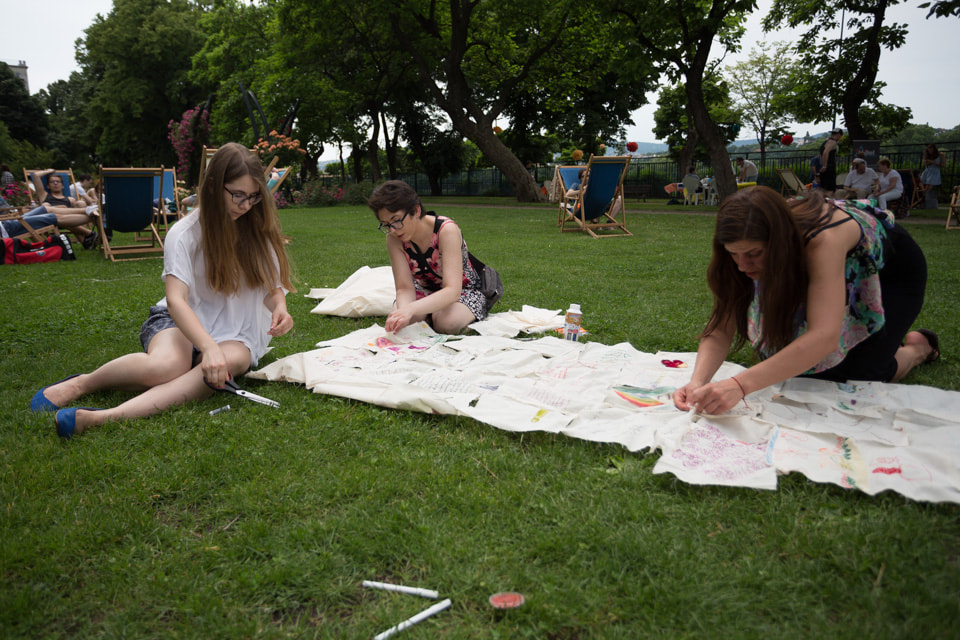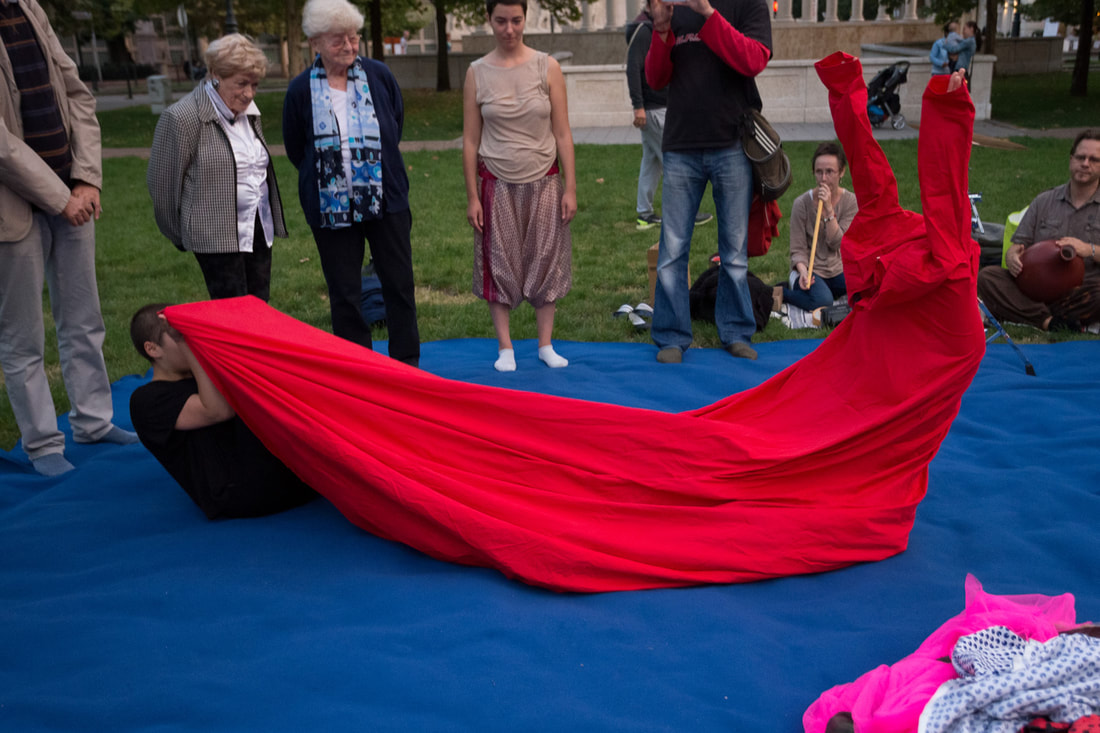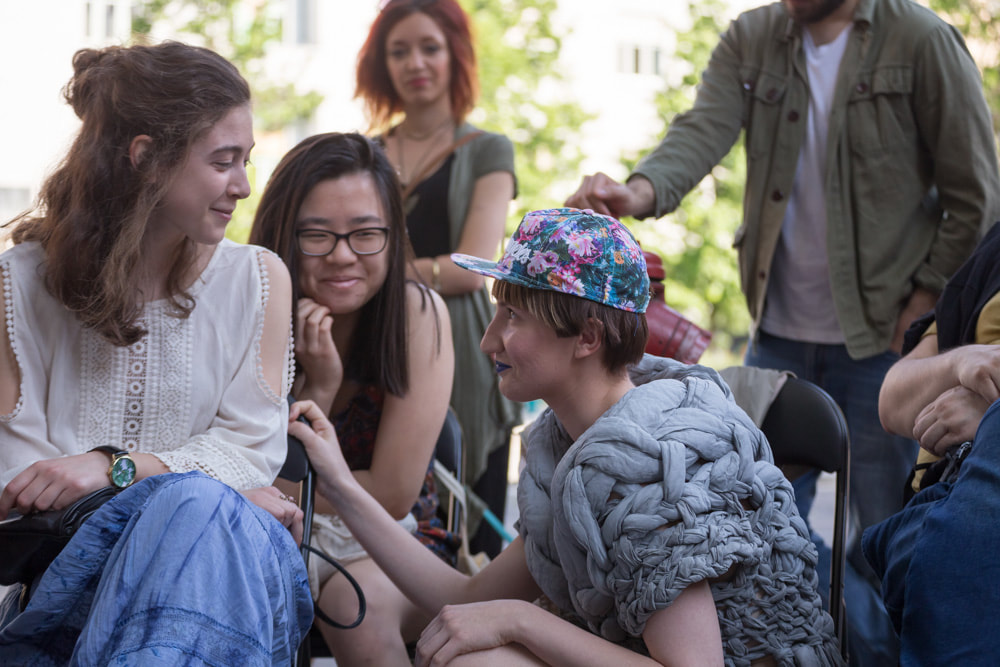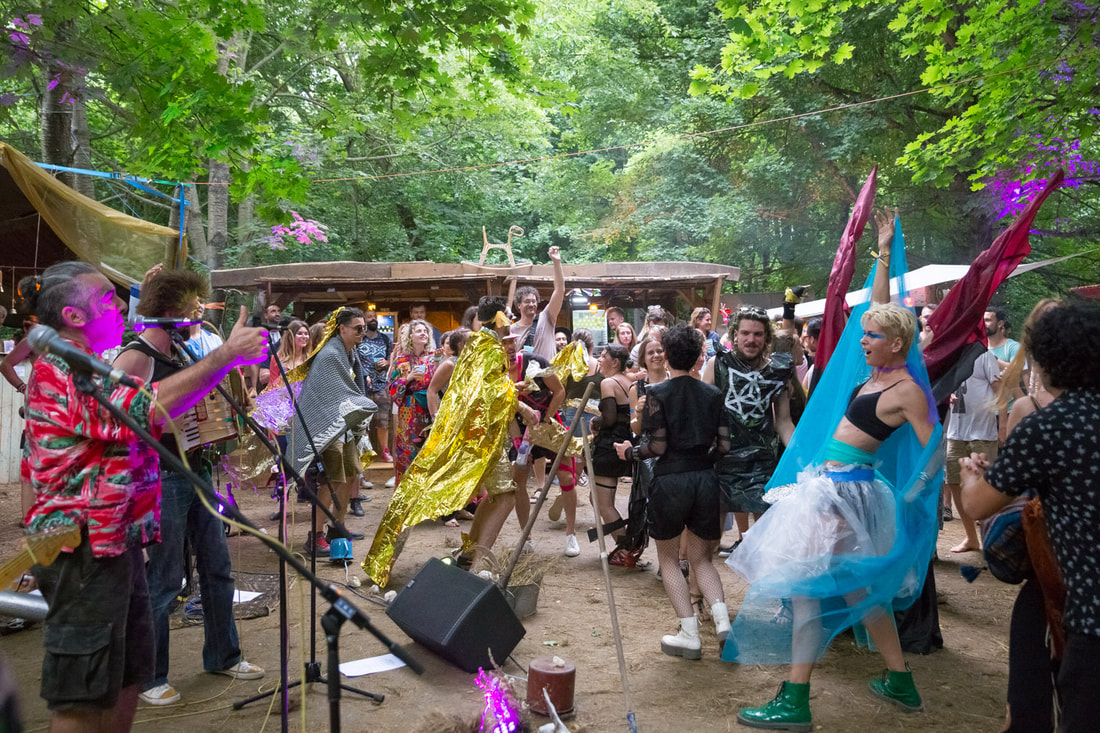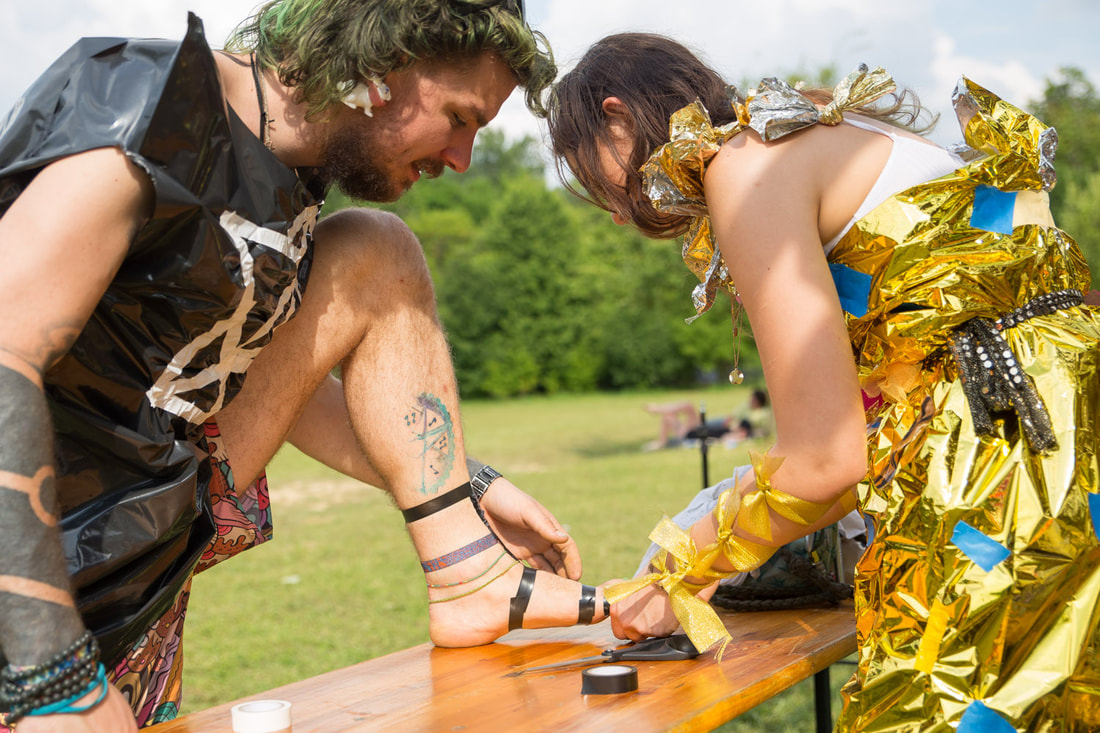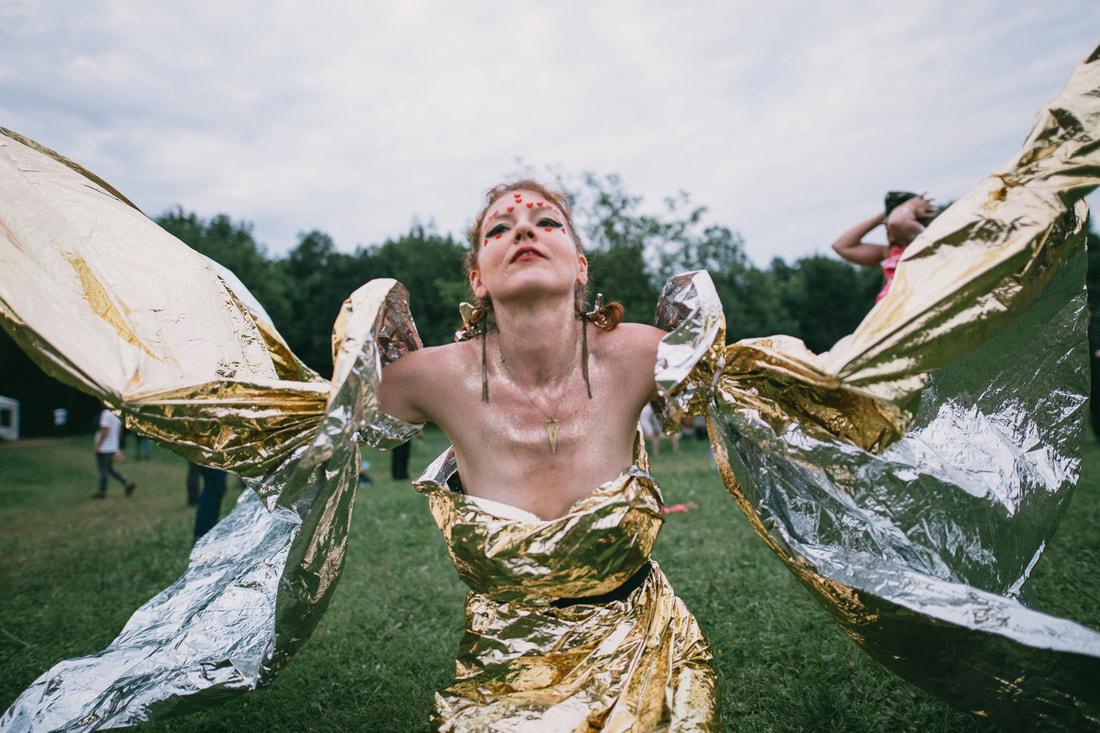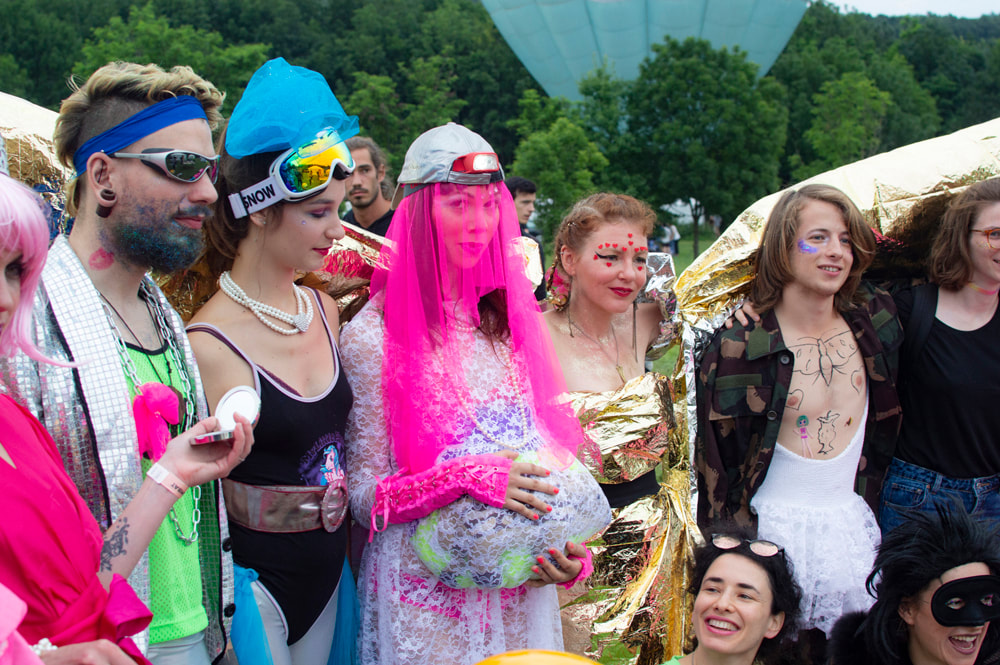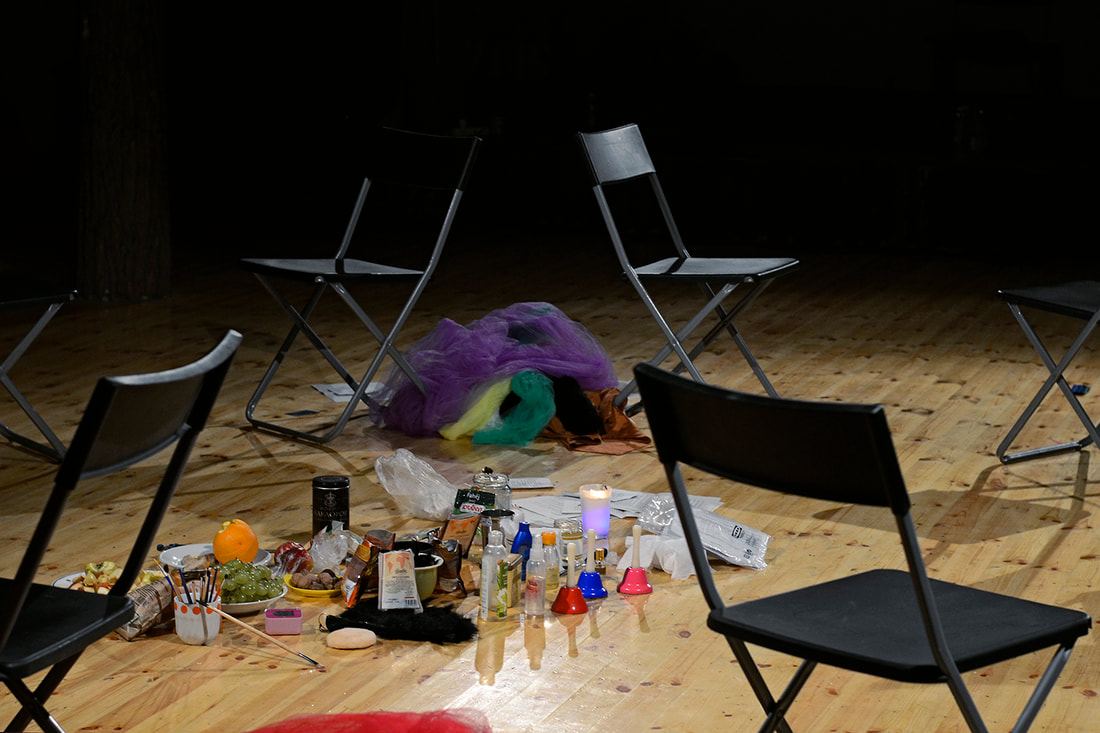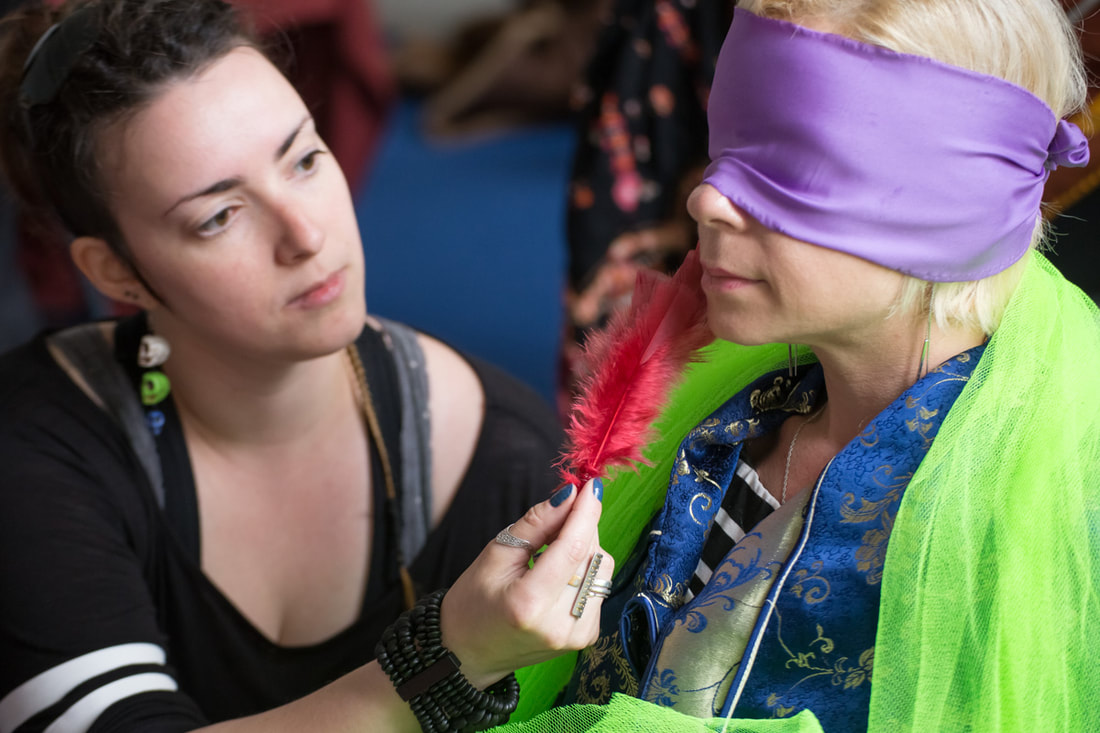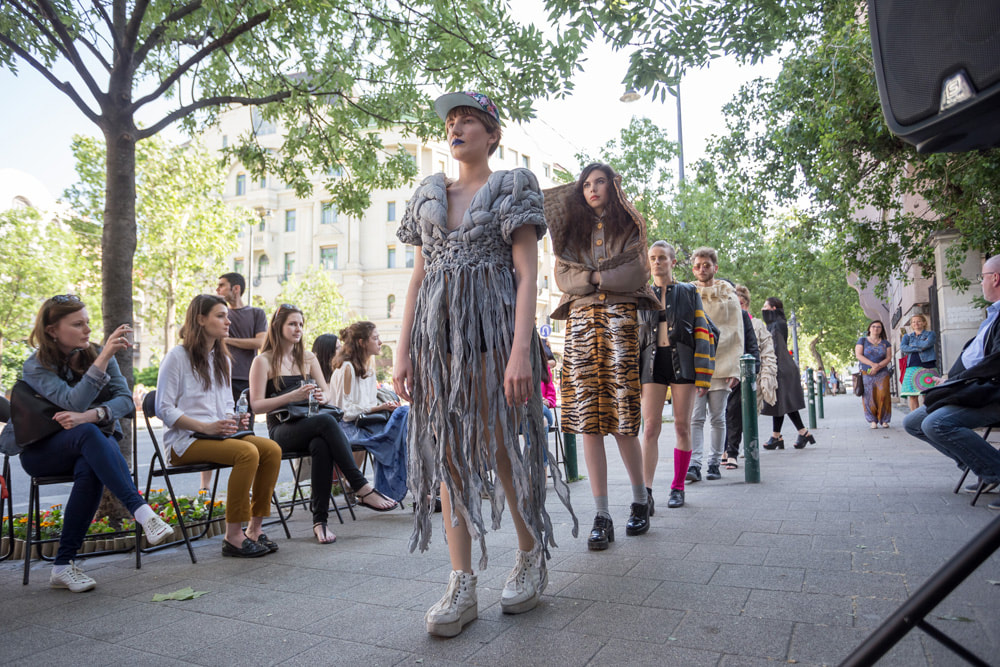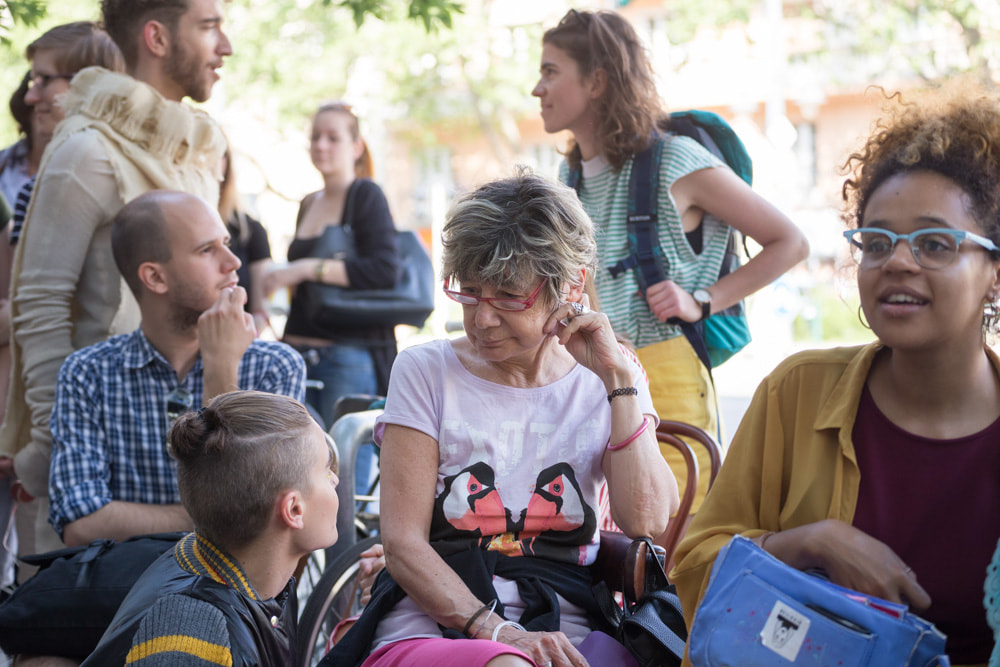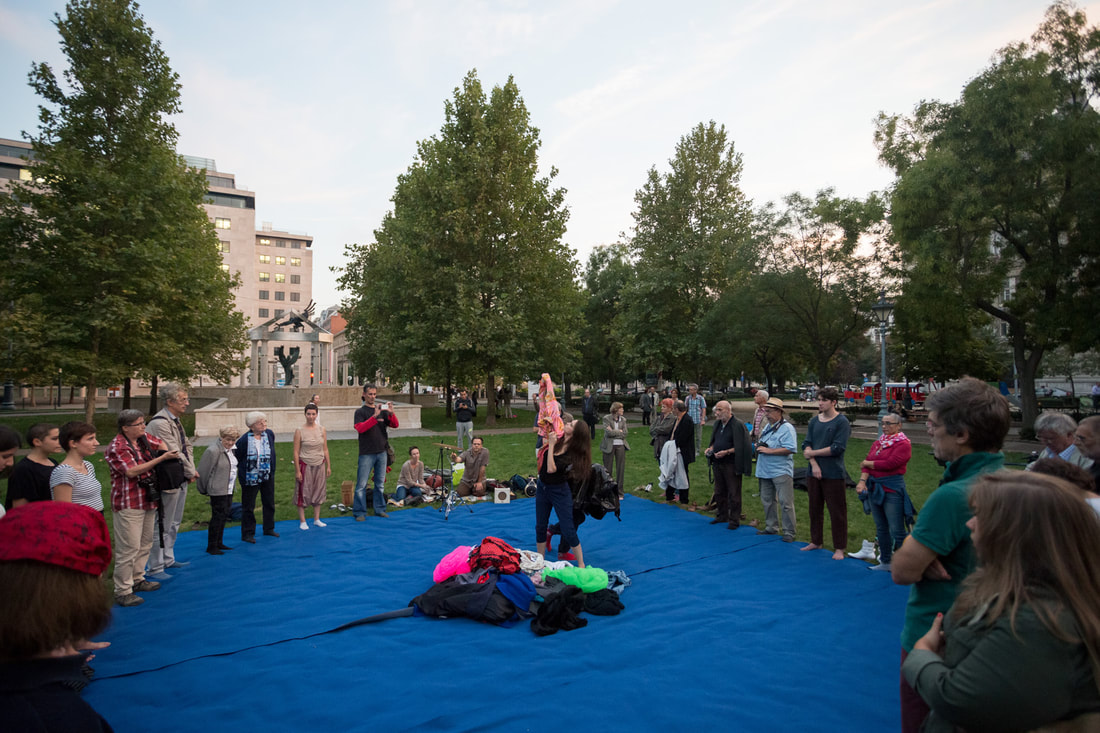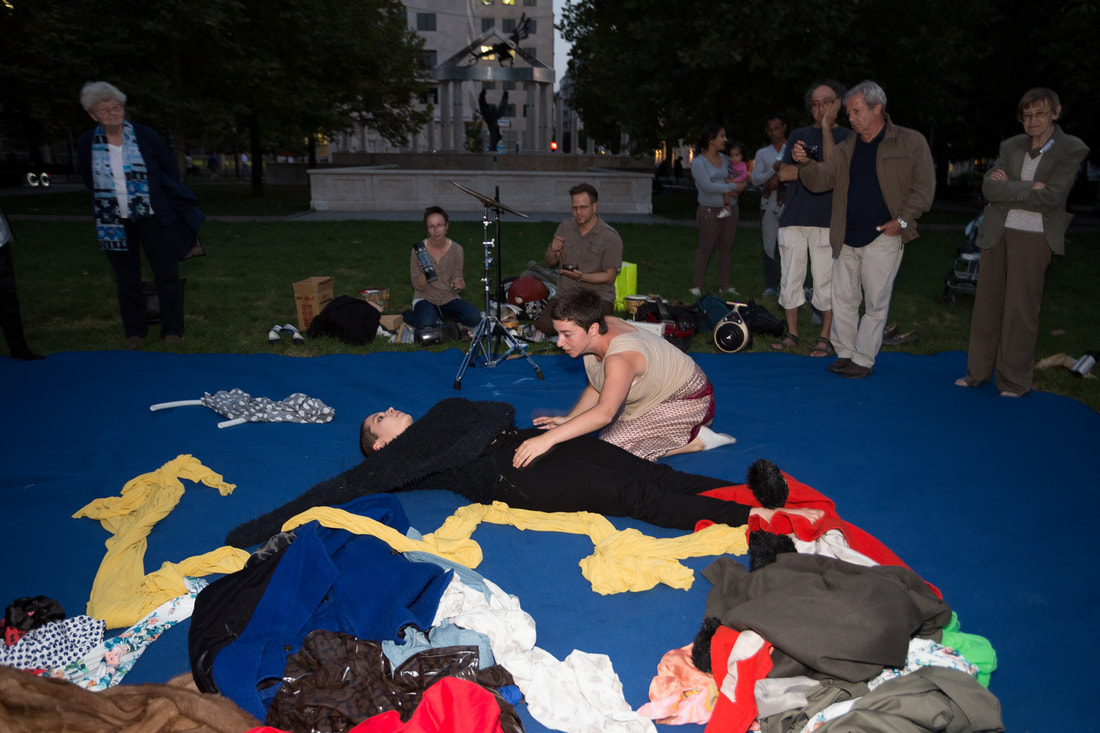Happiness Clinic in Paris: a LIVE version
In reaction to the devastating impacts of COVID-19 on mental health, we invite you to co-create and co-curate with us “Happiness Clinic”, an ephemeral clinic, which will offer “artistic treatments”, cures, cares and therapies, in form of outdoor, participatory group performances to celebrate joy, happiness, and spread positivity in today's uncertain world.
During one whole day the “Happiness Clinic” will open its fictional doors in Paris, and encourage the public to participate in 9 free interactive public space performances happening simultaneously in 9 different spots throughout the whole city. 9 interactive outdoor performance proposals - including ceremony, ritual, promenade, multi-sensorial experience, collective actions, gathering, public intervention, celebration, party - will be selected by You alongside three axes (“Care”, “Creation”, “Connection”), all of them coping with a variety of mental health and psychological problems, such as stress, anxiety, depressive symptoms, insomnia, denial, stigma, anger and fear caused by the pandemic.
During one whole day the “Happiness Clinic” will open its fictional doors in Paris, and encourage the public to participate in 9 free interactive public space performances happening simultaneously in 9 different spots throughout the whole city. 9 interactive outdoor performance proposals - including ceremony, ritual, promenade, multi-sensorial experience, collective actions, gathering, public intervention, celebration, party - will be selected by You alongside three axes (“Care”, “Creation”, “Connection”), all of them coping with a variety of mental health and psychological problems, such as stress, anxiety, depressive symptoms, insomnia, denial, stigma, anger and fear caused by the pandemic.
The intersection of COVID-19 and mental health
Mental health is an important part of overall health and wellbeing. It affects how we think, feel, act, and also how we handle stress, relate to others, and make choices during an emergency. On October 6, 2020, WHO published the results of a survey of the impact of COVID-19 on mental, neurological, and substance use services in 130 WHO Member States. This report comes on the back of mounting evidence that the COVID-19 pandemic is having monumental effects on the mental health and wellbeing of populations worldwide. Public health actions, such as social distancing, can make people feel isolated and lonely and can increase stress and anxiety. Misuse of substances, particularly alcohol, is rising. And as with many other features of this pandemic, not all people have been affected equally. Frontline workers are experiencing increased workload and trauma, making them susceptible to stress, burnout, depression, and post-traumatic stress disorder. Yet, the world is woefully unprepared to deal with the mental health impact of this pandemic, and we believe that art has a significant role to play.
It is important to let people know that it is completely normal to not feel all right all the time – it’s understandable to feel sad, distressed, worried, confused, anxious or angry during this crisis. Everyone reacts differently to difficult events, and some may find this time more challenging than others. During this particular time, people may be looking for new or additional ways to help them feel mentally better and get through.
The main purpose of “Happiness Clinic” is to react to this context by improving peoples’ mental health and wellbeing through a wide range of participatory performances.
It is important to let people know that it is completely normal to not feel all right all the time – it’s understandable to feel sad, distressed, worried, confused, anxious or angry during this crisis. Everyone reacts differently to difficult events, and some may find this time more challenging than others. During this particular time, people may be looking for new or additional ways to help them feel mentally better and get through.
The main purpose of “Happiness Clinic” is to react to this context by improving peoples’ mental health and wellbeing through a wide range of participatory performances.
Supporting others' mental wellbeing
There is a lot art can do to help people during this time. Another report from the WHO, published in 2019, has concluded that engaging in art-based activities can significantly benefit health, both mentally and physically. Engaging people in activities such as dancing, singing and creating provides an added dimension to how people can improve their physical and mental health.
In “Happiness Clinic”, 9 interactive outdoor performances will be imagined along three complementary and transversal axes to cope with the impact of COVID-19 on mental health:
In “Happiness Clinic”, 9 interactive outdoor performances will be imagined along three complementary and transversal axes to cope with the impact of COVID-19 on mental health:
- Care of the body: 3 performances
- Creation and co-creation: 3 performances
- Connection with others, community-building: 3 performances
Supporting local artists
The outbreak of the COVID-19 pandemic particularly threatens the future of artists, creators and cultural operators, who are severely impacted by the enforcement of social distancing measures and the consequent postponements, cancellations or closures of events. As the OECD demonstrates in a recent report, the risks are high for creators, artists and those working in the entertainment sector – a group of workers who are already vulnerable.
As a response to this situation, in the “Happiness Clinic” we want to cooperate with 9 artists, so as to redistribute the earned grant locally, ethically and equally. Every participating artist, selected through a transparent open call, will receive a decent fee.
As a response to this situation, in the “Happiness Clinic” we want to cooperate with 9 artists, so as to redistribute the earned grant locally, ethically and equally. Every participating artist, selected through a transparent open call, will receive a decent fee.
Participative public space performances
The local partner will choose 9 participative public space performance proposals (3 / axe) belonging to all kinds of aesthetics including non-representative, non-canonical, marginal, experimental forms.
The 9 selected proposals must be, in terms of form:
In terms of concept, the 9 proposals must develop one of the three axes:
The 9 selected proposals must be, in terms of form:
- Performative in the wide sense of the term (ceremony, ritual, care, public space interventions, promenade, multi-sensorial experience, lecture, talk, workshop, collective actions, gathering, party...)
- Collective, participatory, and engage actively the public while respecting social distancing directions of local authorities
- Can be repeated several times in row during the day
- Participants from the public should be able to join the performance at any moment
- Be adapted to outdoor with no technical requirements
- Preferably rely on a technique, such as naturopathy – aromatherapy, energy technology, relaxation techniques – sophrology, manual techniques – osteopathy, kinesiology, podology, sport or on an approach like dietetics, food coaching, phytotherapy, traditional massage, reflexology, reiki, magnetism, feng shui, meditation, relaxation, hair care, body care, ayurvedic care, stretching, hiking, qi gong, pilates, tai chi chuan, art therapy, music therapy, dance therapy…
In terms of concept, the 9 proposals must develop one of the three axes:
- Axe 1 – Care of the body, development of self-confidence and encouragement of self-care and self-love through the use of sport, dance and movement exercises.
- Axe 2 – Creation and co-creation through alternative, experimental and horizontal learning and unlearning processes preferably using marginal forms (ballroom dance, nightclub dance, street dance…) and aesthetics (eg. narrative...).
- Axe 3 – Connection with others and community-building activities are seen as a “call for gathering” for friendship, reciprocal support, collective study on a particular subject/issue, and tooling. These are simply human experiences which go beyond relational aesthetics by introducing the production of knowledge and the sharing of skills and tools in addition to the creation of friendly and safe spaces.
Timing
- Reservation of public spaces
- Project co-development with the 9 artists (1 group workshop + 2 one-on-one meetings / participating artist: feedbacks, co-creation, co-development, rehearsals...)
- Operational digital communication
- Operational PR and Press
- Organization of the documentation (photo, video)
- Operational digital communication
- Documentation (photo, video)
- Edition of an online open digital booklet
- Follow-up group workshop for the 9 participating artists
- 4 months before the opening of the “Happiness Clinic”: Selection of the 9 artistic proposal
- 3 month before the opening:
- Reservation of public spaces
- Project co-development with the 9 artists (1 group workshop + 2 one-on-one meetings / participating artist: feedbacks, co-creation, co-development, rehearsals...)
- 1 month before the opening:
- Operational digital communication
- Operational PR and Press
- Organization of the documentation (photo, video)
- 10 days before the opening
- Operational digital communication
- Opening of the “Happiness Clinic”: one full day of free participatory performances providing positivity, happiness, joy, wellbeing, self-care and self-love against the impacts of the COVID-19 pandemic on mental health.
- Documentation (photo, video)
- After the happening
- Edition of an online open digital booklet
- Follow-up group workshop for the 9 participating artists
Dissemination, follow-up, sharing
- Public space performances: From 10 am to 10 pm, the “Happiness Clinic” will open its fictional doors, and encourage the public to participate in 9 different outdoor “artistic treatments” (cures, cares and therapies combining performance art and a healing technique), in the form of public participatory performances to celebrate joy, happiness, and spread positivity in today's uncertain world. The immaterial results (emotions, interaction, connections, better mental health…) will be shared with the general public, with both those who “just” watch them and pass by, and those who participate in them.
- Digital public sharing: Each performance will be streamed and shared through a project-specific Instagram Live page, so as even those can follow the event who can not physically be there.
- Online short tutorials: Every performance will be accompanied by a short online tutorial, allowing the public to make and remake it alone, on their own, following the happening.
- Documentation: The performances will be documented with video and photos. All these visual materials will be shared with the public through the project’s official social media channels (facebook, instagram) and website.
- Digital booklet: These online short tutorials together with performance documentations (photos, videos), presentations and project description, will be gathered and edited in a digital booklet. This open resource will be accessible for everyone: teachers, social workers, practitioners together with the general public can have access to it, and use the shared practices for personal or professional purposes.
Ethics and values
“Happiness Clinic” is a community art project which aims to be responsible, ethically engaged and socially impactful through its concept and form by:
- Coping with the mental and psychological consequences of the pandemic
- Offering human connections, interactions after a long period of social distancing and isolation
- Performing outdoor (parc, street, square, monument…) to open the project to a wider public
- Promoting contemporary dance and performance through simple, humble and generous interactive actions, understandable and appreciable by everyone
- Putting the emphasis on emotions, joy, happiness and human relations
- Giving financial support for 9 artists
Curating and community building as artistic practices
- Through a curatorial form, we wish to create an alternative system of thinking and behaving, based on cooperation (instead of competition), participation (instead of passive spectatorship) and engagement.
- We believe in a new economy of the performing arts: more local, more sustainable, more ethical and more generous, with the hope to stop geographical divisions, and to respond to the outbreak of mental health issues of our time.
- “Happiness Clinic” frees itself from the obsession with the new, the career, the exposure and the haste to overproduce, that this overall race for novelty and overconsumption generate.
- “Happiness Clinic” is an anti-fast art, an apology for slowness, a dazzling, passionate and generous platform for small actions and sustainable changes.
International cooperation
“Happiness Clinic” is an international cooperation. European art institutions, theaters and festivals we are discussing and/or collaborating with:
“Happiness Clinic” is also a contractual collaboration with local artists from the participating countries, and therefore a way to financially support the local art community.
- Hungary: PLACCC Festival
- Czech Republic: Cross Attic
- Slovakia: Tabačka Kulturfabrik
- Great Britain: Newcastle Dance City Theater
- The Netherlands: ICK Dans Amsterdam
“Happiness Clinic” is also a contractual collaboration with local artists from the participating countries, and therefore a way to financially support the local art community.
A bit about us
Anna Ádám is a Franco-Hungarian visual artist and performance maker whose work blurs the boundaries between choreography, image, and object, with emphasis on the body and on the movement as the central forms of expression. She studied performance and fashion before obtaining her Master of Arts from the ENSAPC Art School in Cergy, France, in 2016. By combining performing arts, visual arts and curatorial practices, Anna Ádám’s work transgresses normative discourses, challenges gender boundaries, systems of representation, standards of beauty together with the established codes of the fashionable body.
Anna Ádám also considers transmission, community building activities and curatorial practices as part of her main artistic medium. At the intersection of an art workshop and an interactive performance, in the form of "thematic movement research laboratories", private one-on-one "séances", experimental learning and unlearning sessions, Art Fitness classes and JAM LABS, she creates and curates social and spatial contexts, develops new forms of collective aesthetics based on participation, connection, and physical presence.
Anna Ádám also participated as a performance artist to external projects (Palais de Tokyo (FR), Musée Georges Pompidou (FR)...). Since 2016 she presents regularly her work in both theaters (E-Werk Kulturzentrum (DE), Theater MU (HU), National Theater (HU), Piccolo Teatro (DE)...) and exhibition spaces (Ludwig Museum (HU), Museum of Modern Art Yerevan (AM), National Museum of History Paris (FR)...), and holds workshops in universities across Europe (Austria, France, Hungary, Serbia, Armenia...). In 2019 she gave seminars at the Academy of Fine Arts in Vienna (AT) and at the University of Artois (FR). In 2020 she is resident artist at the Mediterranean Dance Center (HT) and at ZFinMalta (MT). In 2021 she will collaborate with Dance City Theater (UK), La Générale (FR), Abbaye de Maubuisson (FR) and teach with the ZeroPlus Dance School (HU) and the Ecole Nationale Supérieure d'Arts de Paris-Cergy (FR).
MORE...
Gray Box: Created as a collective in 2014, and founded as a company in 2018, Gray Box’s work takes interest in going beyond the boundaries between "white cube" and "black box": choreography, image and object, by emphasizing the body and movement as central forms of expression. Based on trans-disciplinary research and collective experimentation, our company creates, curates and produces, in all horizontality, a body of work with a strong political, ecological and social dimension. We consider the moving body together with its immaterial aspects - such as perception, empathy, emotions, intuitions - as a political tool to forge emancipated communities, create social connections and human interactions.
MORE...
Anna Ádám also considers transmission, community building activities and curatorial practices as part of her main artistic medium. At the intersection of an art workshop and an interactive performance, in the form of "thematic movement research laboratories", private one-on-one "séances", experimental learning and unlearning sessions, Art Fitness classes and JAM LABS, she creates and curates social and spatial contexts, develops new forms of collective aesthetics based on participation, connection, and physical presence.
Anna Ádám also participated as a performance artist to external projects (Palais de Tokyo (FR), Musée Georges Pompidou (FR)...). Since 2016 she presents regularly her work in both theaters (E-Werk Kulturzentrum (DE), Theater MU (HU), National Theater (HU), Piccolo Teatro (DE)...) and exhibition spaces (Ludwig Museum (HU), Museum of Modern Art Yerevan (AM), National Museum of History Paris (FR)...), and holds workshops in universities across Europe (Austria, France, Hungary, Serbia, Armenia...). In 2019 she gave seminars at the Academy of Fine Arts in Vienna (AT) and at the University of Artois (FR). In 2020 she is resident artist at the Mediterranean Dance Center (HT) and at ZFinMalta (MT). In 2021 she will collaborate with Dance City Theater (UK), La Générale (FR), Abbaye de Maubuisson (FR) and teach with the ZeroPlus Dance School (HU) and the Ecole Nationale Supérieure d'Arts de Paris-Cergy (FR).
MORE...
Gray Box: Created as a collective in 2014, and founded as a company in 2018, Gray Box’s work takes interest in going beyond the boundaries between "white cube" and "black box": choreography, image and object, by emphasizing the body and movement as central forms of expression. Based on trans-disciplinary research and collective experimentation, our company creates, curates and produces, in all horizontality, a body of work with a strong political, ecological and social dimension. We consider the moving body together with its immaterial aspects - such as perception, empathy, emotions, intuitions - as a political tool to forge emancipated communities, create social connections and human interactions.
MORE...
Our former public space projects
|
Celebration, 2019 © Gray Box
|
Recycling costume creation, 2019 © Gray Box
|
|
Public space interventions, 2018 © Gray Box
|
Freak show carnival, 2018 © Gray Box
|
|
Ritual, 2017 © Gray Box
|
Multi-sensorial experience, 2017 © Gray Box
|
|
Fashion performance, 2017 © Gray Box
|
Discussion, 2017 © Gray Box
|
|
Collective storytelling, 2016 © Gray Box
|
Outdoor performance, 2016 © Gray Box
|

